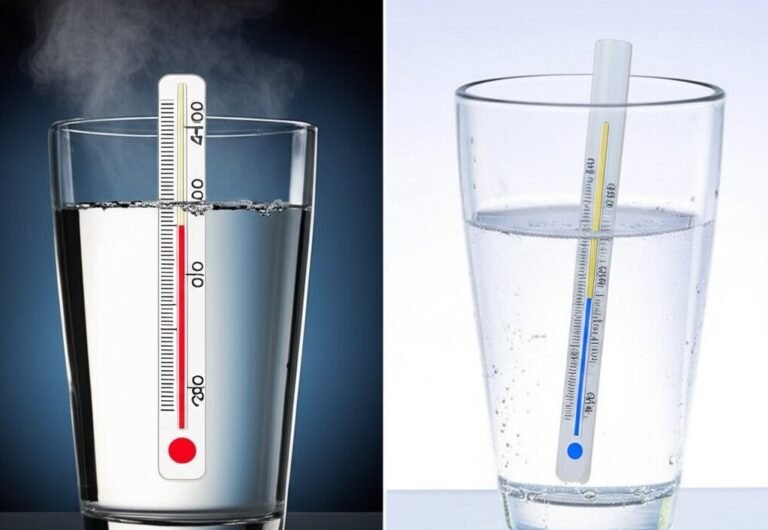Ever pulled a shirt from the laundry and thought, “Uh-oh”? Whether it’s a silk blouse or a wool suit, some items just don’t belong in the home washer. That’s where dry cleaning comes in, a lifesaver for those delicate fabrics and tough stains. But what exactly is dry cleaning? Let’s demystify this process with a step-by-step guide and understand why it’s often the best choice for your treasured garments.
What is Dry Cleaning?
Dry cleaning stands out as a specialized method for cleaning clothing and textiles, where a chemical solvent replaces water. The term “dry cleaning” might suggest a lack of liquids, but in reality, it refers to the absence of water. This technique involves using a liquid solvent that cleans fabrics without saturating them in water, which can often be harsh on certain materials.
The solvents used in dry cleaning are designed to dissolve and remove grease and dirt without compromising the integrity of the fabric. This is particularly beneficial for materials that react badly to water, such as silk, wool, and delicate synthetic fibers. Water can cause these fabrics to shrink, distort, or even change texture, which can be avoided with the dry cleaning process.
Dry cleaning helps to maintain the color and texture of the fabric, ensuring that garments keep their shape and appearance over time. This method not only cleans but also preserves, making it an ideal choice for everything from luxury evening wear to everyday business suits. By avoiding water, dry cleaning avoids the swelling of fibers that leads to shrinking and warping, thus extending the life and look of clothing. This gentle yet effective cleaning process ensures that delicate items remain in excellent condition, making dry cleaning a preferred option for maintaining high-quality and specialty textiles.
The Dry Cleaning Process

Step 1: Tagging and Inspection
The initial phase of the dry cleaning process involves meticulous tagging and inspection of each item. Every garment is tagged with a unique identifier which serves multiple purposes. This tag ensures that each piece of clothing can be tracked throughout the dry cleaning process, preventing mix-ups and losses—a crucial step in a business where items often have great personal or financial value.
Following the tagging, each garment undergoes a thorough inspection. This is not just a cursory glance; technicians look for any stains, noting their type and severity, and inspect the fabric for any signs of damage such as tears or loose threads. They also review any special instructions that might have been provided, which could include requests for particular attention to delicate areas, preferences for starch levels in fabrics, or considerations for color preservation.
This detailed inspection sets the stage for a tailored cleaning approach. It allows the dry cleaners to strategize how best to treat each garment, considering factors like fabric type, color, and the nature of any stains. By identifying these needs early in the process, the dry cleaning professionals can customize their methods and treatments, ensuring that each item receives the most effective and appropriate care right from the start.
Step 2: Pre-Treatment
Pre-treatment plays a pivotal role, particularly when dealing with stubborn or complex stains. Before the main cleaning phase begins, each identified stain is treated with special attention by skilled technicians. This stage is crucial because different stains—such as those from oil, wine, ink, or even grass—require specific solvents and techniques to effectively break them down without harming the fabric.
Technicians use their expertise to apply the appropriate pre-treatment products. These products are carefully selected based on the chemical makeup of the stain and the type of fabric affected. For instance, an oil-based stain on a silk blouse needs a different treatment than a wine stain on a wool suit. The correct pre-treatment ensures that these stains can be dissolved in the subsequent dry cleaning stage, enhancing the effectiveness of the solvent used.
This targeted approach is essential not only for stain removal but also for preserving the condition of the garment. By addressing each stain individually and using the most suitable pre-treatment methods, technicians maximize the chances of removing stains completely. This meticulous attention to detail ensures that the dry cleaning process provides the best possible outcome, maintaining the pristine appearance of garments and extending their wearable life.
Step 3: The Cleaning
During the third step of the dry cleaning process, the actual cleaning occurs. Clothes are placed into a large, sophisticated machine specifically designed for dry cleaning. Here, a solvent is used instead of water, which is key to the method’s effectiveness on delicate fabrics that can be damaged by traditional washing.
The solvent used in dry cleaning is not just any chemical; it’s chosen for its efficacy in dissolving oils and fats without penetrating and weakening the fibers as water can. This is where the term “dry” cleaning is somewhat misleading—while the process is not dry, it avoids the fiber-swelling effects of water, thus preserving the garment’s integrity and appearance.
As the garments tumble in the machine, the solvent circulates and is continuously filtered. This filtration is crucial as it removes impurities and dirt, preventing them from settling back onto the fabric. Such meticulous filtering ensures that each garment is uniformly cleaned, with no risk of dirt redepositing, which can often occur in less refined washing processes.
This stage of the dry cleaning process is particularly gentle, avoiding the wear and tear associated with traditional washing machines and the agitation of water. It’s this gentle cleansing action that makes dry cleaning so suitable for delicate fabrics, tailored pieces, and garments with embellishments that could be easily damaged by more aggressive washing methods.

Step 4: Post-Spotting
Following the main cleaning phase in the dry cleaning process, each garment undergoes a crucial re-evaluation known as post-spotting. This is where the true precision of dry cleaning shines through. After the clothes have been cleaned with the solvent, technicians perform a thorough inspection to ensure that all stains have been removed. This inspection is detailed and meticulous, ensuring that no area of the garment is overlooked.
If any stains persist after the initial cleaning, they receive additional treatment. This might involve applying specialized spot-cleaning techniques that are targeted at particularly stubborn stains. These techniques are highly effective and are tailored to the specific type of stain and fabric, ensuring that even the most challenging spots can be addressed without damaging the garment.
This step is essential because it guarantees that every item returns to the customer in pristine condition. The post-spotting process highlights the level of care and attention that dry cleaning offers compared to regular laundry services. It’s not just about cleaning the clothes but restoring them as close as possible to their original state.
Step 5: Finishing Touches
The final stage of the dry cleaning process focuses on the finishing touches that restore your garments to their best possible condition. After the thorough cleaning and detailed post-spotting, each item is steamed and pressed meticulously. This is not just about removing wrinkles; it’s a crucial part of the process that helps to rejuvenate the fabric, returning it to a crisp, polished state that’s difficult to achieve with home laundering.
During this step, the garments are also carefully re-shaped to their original form. This involves attention to detail in aligning seams, ensuring pleats are sharp, and collars and cuffs are crisp. If any minor repairs are needed, such as sewing on a loose button or mending a small tear, these are also taken care of at this stage. This comprehensive care ensures that each piece not only looks clean but also well-maintained and ready to wear.
Once the steaming, pressing, and mending are complete, each garment is neatly packaged. This often involves placing the items on hangers, covering them with protective plastic, and ensuring they are presented in a way that maintains their freshly cleaned state. The careful packaging is the final step that ensures your clothes are protected until they are picked up, looking as good as new and ready to make a positive impression the moment you step out wearing them.
Why Choose Dry Cleaning?
Dry cleaning offers several compelling advantages that make it the preferred choice for maintaining a variety of garments, particularly those that are delicate or require special care. Here’s an extended look at why dry cleaning is such a valuable service:
- Fabric Care: Dry cleaning is highly beneficial for a range of delicate fabrics that can easily degrade or shrink when exposed to water. Fabrics such as silk, wool, velvet, and certain synthetics need gentle handling that conventional washing methods can’t provide. Dry cleaning uses solvents that clean effectively without penetrating the fabric fibers as water does, which helps maintain the fabric’s integrity, feel, and appearance. This process prevents the common problems associated with water washing, such as shrinkage, color bleeding, and texture alteration.
- Effective Stain Removal: One of the standout benefits of dry cleaning is its effectiveness in removing certain types of stains. Grease, oil, and other similar stains are notoriously difficult to remove with just water and regular detergents. Dry cleaning solvents can dissolve these oily substances effortlessly, ensuring that the garments are thoroughly cleaned without leaving any residue. This ability makes dry cleaning particularly valuable for business attire, formal wear, and other clothing where a pristine appearance is essential.
- Longevity of Clothing: Regularly dry cleaning your clothes can significantly extend their life, which is crucial for high-quality or designer pieces. The gentle treatment in dry cleaning processes prevents the typical wear and tear associated with traditional washing. Fabrics retain their color and texture for longer, seams stay intact, and embellishments such as beads or embroidery are less likely to get damaged. By reducing the stress on materials during cleaning, dry cleaning helps maintain the original look and feel of your garments, ensuring they continue to look their best for years to come.
- Convenience and Expertise: Choosing dry cleaning also means benefiting from professional expertise. Dry cleaners assess and treat each garment individually, applying their knowledge of fabrics and stains to achieve the best results. This expert handling is especially important for items that require special attention or are too cumbersome to wash at home, like winter coats, formal dresses, and suits. Additionally, many dry cleaning services offer conveniences like pickup and delivery, making it a hassle-free solution for busy individuals.
- Preserving and Protecting Investment Pieces: For those who invest in high-end clothing, dry cleaning is not just a cleaning method—it’s a maintenance strategy. It protects your investment in quality garments by ensuring they remain in peak condition. This care is particularly important for items worn infrequently, such as special occasion outfits or seasonal wear, where proper storage and maintenance are key to their longevity.

Easy Dry Cleaning Guide
Dry cleaning often feels like a magical, almost mysterious process, especially when you see the transformation of your garments from worn to spectacular. Yet, it’s truly grounded in deep expertise in fabric care and meticulous attention to detail. Each phase of the dry cleaning process—from the initial inspection and tagging to the careful pre-treatment of stains, through the thorough cleaning and to the final meticulous pressing—works to ensure that every piece of clothing is returned not just cleaned, but renewed.
When your wardrobe includes items that require more than just a simple wash—like a delicate dress, a professional suit, or a favorite silk blouse—dry cleaning becomes not merely a cleaning choice but a crucial method for preserving the life and look of your investments. It’s about caring for the pieces that you treasure, ensuring they’re not only clean but maintained in excellent condition.
For those in Toronto looking to give their garments the best care, Toronto Shine Cleaning offers a professional and detailed dry cleaning service. With a focus on quality and customer satisfaction, they provide a range of options to treat each of your items with the care they deserve. Whether you need a simple refresh or a thorough clean of a cherished piece, consider entrusting your garments to a service that understands the value of your wardrobe.



















